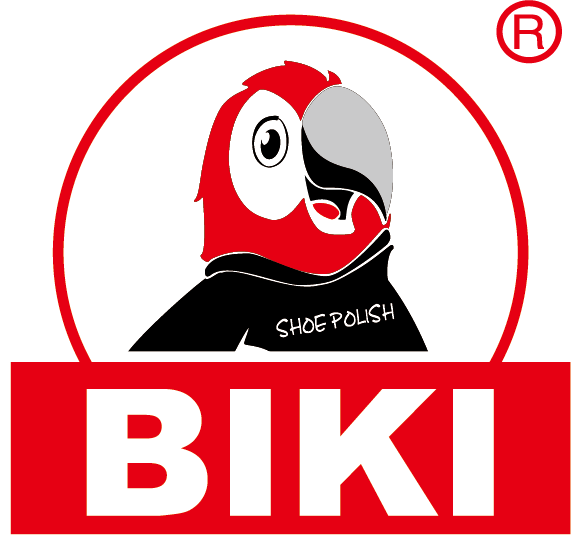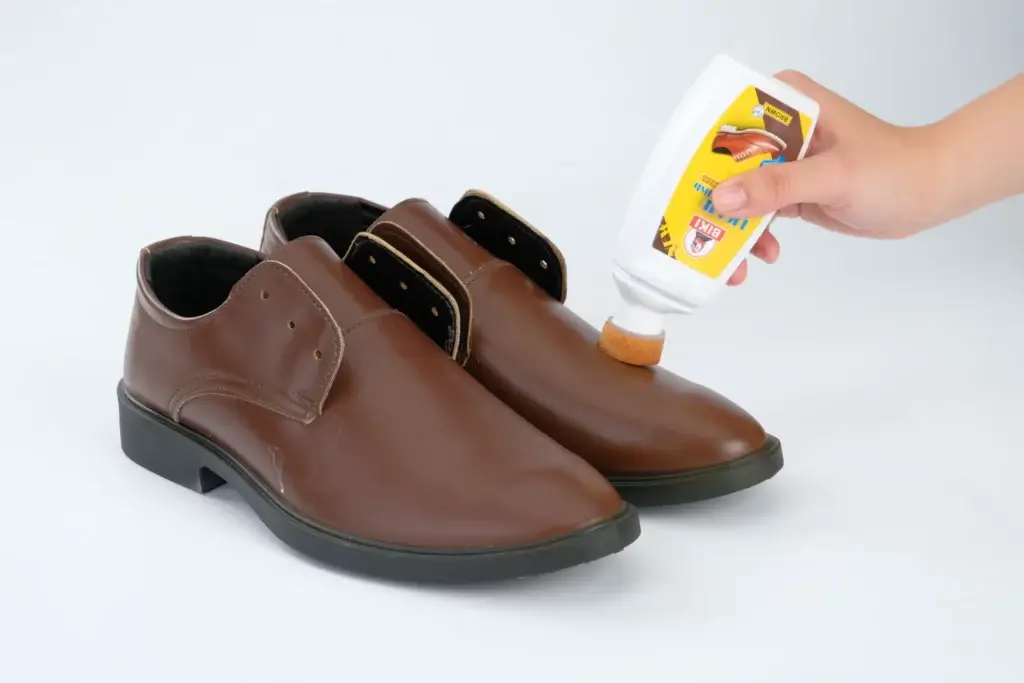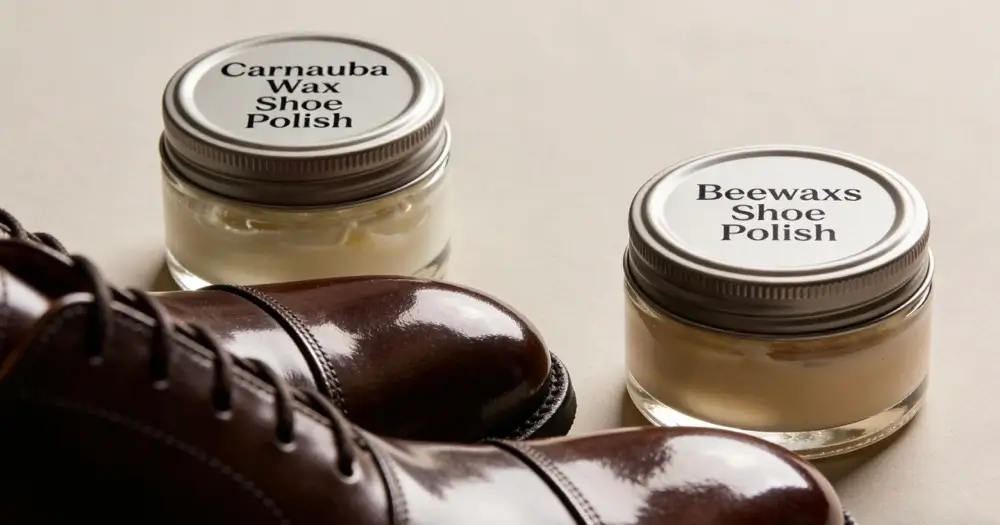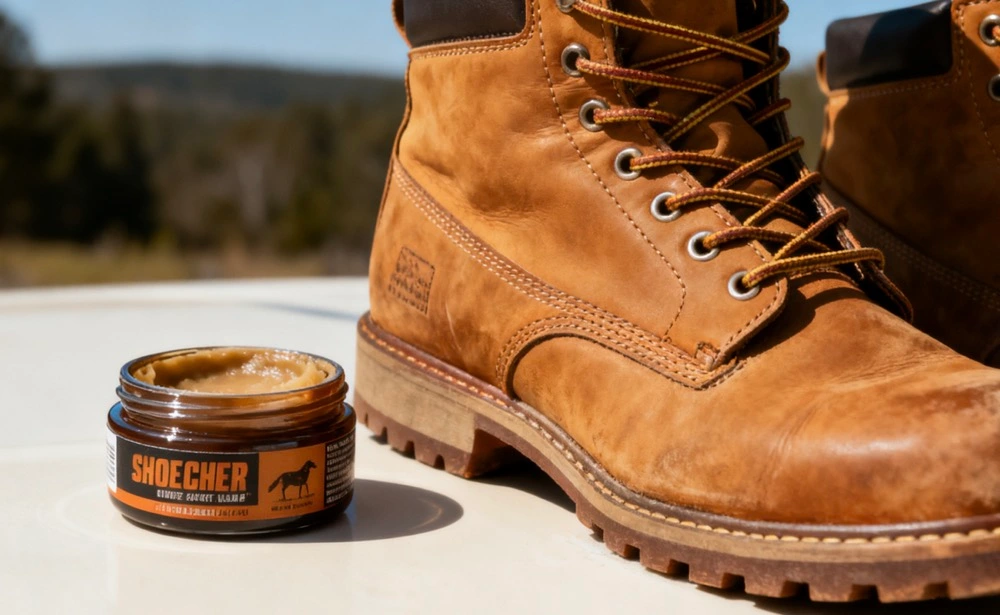Leather conditioner and mink oil are both popular ways to protect leather goods and keep them looking good, but they work in different ways and have different effects on the leather. To properly care for leather, you need to know what makes them different. Leather conditioner is mostly used to feed and moisturize leather, while mink oil is known for its deep conditioning and waterproofing abilities.
This guide gives an expert breakdown of each product, explaining the science behind it, how to use it correctly, and a professional-grade way to do so.
What is leather conditioner and how does it work?
A leather conditioner is a special product that adds moisture back into leather to keep it soft and prevent it from drying out and cracking. It’s like putting lotion on your leather goods.
Composition: Most leather conditioners are made up of a mix of natural oils and waxes. Lanolin, beeswax, neatsfoot oil, jojoba oil, and other emollients like almond or coconut oil are some of the most common ones.
Main Uses:
- Moisturizing: It feeds the leather fibers, making them more flexible and stopping them from becoming brittle.
- Protection: It can act as a barrier to keep stains and moisture out.
- Look: A good conditioner can make the leather look shinier and shinier.
When to Use It: Leather conditioner is great for taking care of most leather items on a regular basis, especially those that aren’t exposed to very bad weather. This includes leather jackets, shoes, furniture, car interiors, and fashion accessories.
What is in mink oil and how does it work?
The fatty layer under a mink’s pelt is where mink oil comes from. For a long time, it has been used to protect and condition leather.
Composition: The name suggests that it is pure mink oil, but many commercial products are a mix that may contain lanolin, silicone, and neatsfoot oil. Palmitoleic acid, which is found in pure mink oil, has properties that are similar to those of human sebum.
Main Uses:
- Deep Conditioning: It goes deep into the leather to restore oils that have been lost, which is especially helpful for things that have dried out.
- Water-resistant: Mink oil is great at keeping leather from getting wet, which is why it’s often used on outdoor gear.
- Softening: It makes leather a lot softer.
Possible Drawbacks:
- Darkening: One of the most noticeable effects of mink oil is that it can make the leather darker, which may not be what you want for all items.
- Over-softening: If you use it too much, the leather may get too soft and lose its shape.
- Attracts Dirt: Because the product is oily, it can make the leather’s surface more likely to get dirty and dusty.
Mink Oil vs. Leather Conditioner at a Glance
| Feature | Leather Conditioner | Mink Oil |
| Primary Function | To moisturize and maintain flexibility. | To deeply condition and waterproof. |
| Composition | A blend of oils, waxes, and sometimes lanolin. | Derived from mink fat, often blended with other substances like silicone and lanolin. |
| Best For | Regular maintenance of softer leather goods like jackets and bags. | Rugged, outdoor items such as work boots and hiking gear. |
| Effect on Color | Minimal color change. | Tends to darken the leather. |
| Water Resistance | Provides a protective barrier against moisture. | Offers superior water resistance. |
| Potential Drawbacks | May not offer sufficient protection for items in harsh conditions. | Can make leather overly soft, attract dirt, and potentially harden over time. |
So, what’s the verdict?
As the table shows, the “best” choice truly depends on your mission.
Leather Conditioner is your go-to for routine care and preservation. It’s the safe, reliable choice for maintaining the health and appearance of most of your leather goods, from dress shoes to cherished jackets.
Mink Oil, on the other hand, is a heavy-duty specialist. It’s the powerful tool you bring out when your work boots or hiking gear demand serious weather protection and deep conditioning.
Now, Choose Your Next Step:
✅ If you’ve decided the heavy-duty protection of Mink Oil is right for your gear…
Your success now depends on the application. Learn the right way to apply it to avoid common mistakes and achieve the best results.
➡️ Read our Ultimate How-To Guide for Mink Oil on Boots.
✅ If you feel a versatile Leather Conditioner is the smarter choice for your footwear…
The next step is to find a professional-grade formula that delivers on its promises.
➡️ Explore BIKI’s Professional Leather Conditioner Series.
How-To Guide: Applying Them the Right Way
It’s just as important to use these products correctly as it is to pick the right one. To keep your shoes safe, do these things.
Step 1: Getting ready is the most important part
You can’t put conditioner on leather that is dirty. Good preparation makes sure the product can get into the leather.
- Remove the laces so you can get to all parts of the shoe. Use shoe trees to keep the shape of the boot and get rid of any wrinkles.
- Use a brush made of horsehair to get rid of all the dirt, dust, and mud. Look closely at where the upper and the sole meet.
- Use a leather cleaner and a damp cloth to clean very dirty boots. Gently wipe the whole surface.
- Let the leather dry completely at room temperature. Don’t use heat, like a hairdryer or heater, because it will hurt the leather.
Step 2: The Test Patch
This step is very important, especially when using mink oil. Leather is not all the same, and different products can have different effects on different types of leather.
Put a small amount of the product you chose in a place that isn’t easy to see, like inside the tongue or the top of the boot. Check for any unwanted color change or reaction after an hour. Keep going if it looks good.
Step 3: Application Technique
This is where experience matters. The leather should soak up the product, not leave a greasy surface.
- To condition leather, use your fingers or a soft cloth. Put a little on and rub it into the leather in small circles. You want a layer that is thin and even. The leather should look clean, not greasy. If you need more, add it, but start with less.
- For Mink Oil, a little bit goes a long way. You can warm it up by rubbing it between your fingers. This makes it easier for it to melt and soak in. Use it sparingly, paying special attention to the seams and edges, which is where water usually gets in. This is normal: the leather will darken right away as it soaks up the oil.
Step 4: Rest, Buff, and Admire
Let the boots sit for at least 30 minutes before using leather conditioner. For best results, let mink oil sit for a few hours or overnight.
After waiting, use a clean brush or soft cloth to buff the whole shoe. This takes away any extra product and leaves a soft shine. Your boots have been treated and are now ready to wear.
Questions and Answers
Can I use both on the same pair of boots?
Yes, but this is a more advanced way to do things in certain situations. This method should only be used on boots that are heavy-duty or will be worn outside in very bad weather. Don’t do this on dress shoes or casual boots.
First, use leather conditioner to keep the leather moist from the inside out. Wait a full 24 hours for it to soak in completely. As a last step, put on a very thin coat of mink oil to keep water out.
Will mink oil damage my boots?
It all depends on the type of leather and the boot. Mink oil isn’t good for soft leathers like calfskin, suede, or nubuck. It would hurt those things.
It won’t hurt the structure if you use the right kind of leather (thick, oil-tanned work boot leather). But it will permanently change the look of light-colored leathers by making them darker. Different kinds of leather need different kinds of care, as conservation-grade advice says. Always pick the item that is made for your type of leather.
How often should I take care of my leather?
There isn’t just one answer. It depends on how you use it, where you are, and what kind of leather it is. To get started, follow these steps:
- Dress shoes you wear every day should be conditioned every three to six months or when they look dry.
- Casual boots (used a lot): Condition every 2 to 4 months.
Heavy use work or hiking boots should be cleaned after each major use. Condition your hair every month and use mink oil before a big trip or the rainy season.
From Lab to Label: Work with a Top Shoe Care Manufacturer
We are experts at understanding how to care for leather. We don’t just write guides at BIKI; we also research, design, and make high-quality leather care products for brands all over the world. We offer private label and custom formulation (OEM/ODM) solutions that really work, from picking the best ingredients to balancing natural oils.

Call our experts today to talk about your project if you want to start your own line of shoe care products or need a reliable partner for manufacturing.





